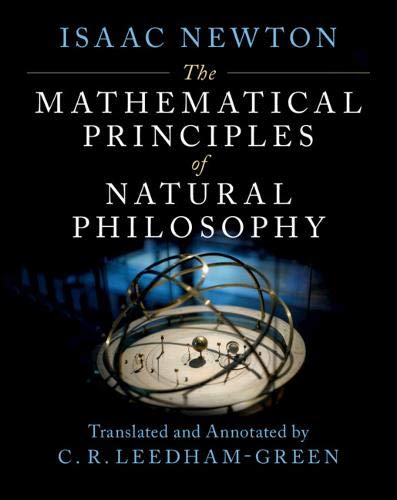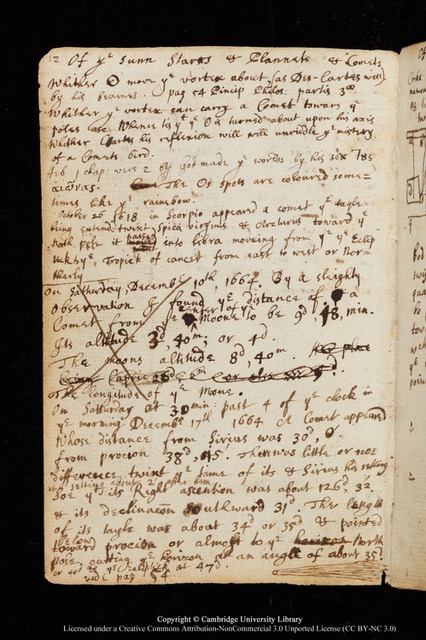Newton was an intensely learned and determined theologian, whose striking views are of universal interest. He was a priest of nature in that, for him, understanding the universe, as he Newton understood it, was closely related to understanding God. In this, my eighth blog, I pay homage to Rob Iliffe’s great book Priest of Nature: The religious worlds of Isaac Newton, published by OUP. I also commend Stephen Snobelen’s paper, “God of Gods, and Lord of Lords”: The Theology of Isaac Newton’s General Scholium to the Principia, published by Osiris.
The first edition of The Principia was published with no theological comments. But there was a serious metaphysical problem with the theory of gravity. It proposed action at a distance, and this raised some fierce criticism. How could this be possible? Newton did not take criticism kindly. And so the great General Scholium was added to the end of The Principia.
Newton was happy to hypothesise the law of universal gravitation, but not to hypothesise a means by which this might come about. The latter would be a hypothesis in a different mould, and it is of this kind of hypothesis that he wrote, in the General Scholium, with great emotional force, the famous words hypotheses non fingo, or ‘I assume no hypotheses’.
This raises the question of the first cause, and Newton states that “This very elegant arrangement of the sun, the planets, and the comets could not have arisen but through the design and dominion of a wise and powerful being.” For some people this argument has been replaced by the anthropic principle, but as there are only some thirty versions of the anthropic principle in current circulation, the theistic argument is well ahead.
Newton is very insistent that the central property of godhead lies in dominion, and he sees Zeus and Jupiter as the classical understanding of God, rather than as being false gods. He makes no direct reference to Christ, though he does reference a verse in the gospel according to St. John, where Christ quotes one of the psalms.
Some of Newton’s contemporaries read this as a subtle reference to his Arianism, a theological stance that does not place Christ on such a high pedestal as do the Catholic and Anglican orthodoxies. His Arianism was technically illegal, and was kept secret. It may have been one of the reasons for him declining to take up holy orders, which would have barred him from the Lucasian chair at Cambridge had it not been for royal interference on his behalf.
But behind the theological stance expressed or hinted at in the General Scholium, which today would hardly raise an eyebrow, Newton held views that we would find astonishing. The book of Daniel in the Old Testament, and The Revelation of St. John the Divine in the New Testament, contain elaborate prophetic visions, involving beasts with various numbers of horns, virgins, vials, a dragon, and so forth, and Newton set himself to interpret these visions. To prepare himself for this sacred endeavour he studied the early life of the church, with Newtonian intensity, to match the historical record against these prophesies, which, according to St. John, were ‘to shew unto his servants things that were soon to come to pass’. Newton was by no means alone in undertaking this difficult task, and different schools of thought attacked each other vigorously.
Newton was also concerned with ancient belief. The true religion begins with Adam, and because of the flood must have been passed down via Noah. He decided that the ancient religion saw the divine hand in the wise creation of the universe, and worshipped God by constructing circular temples, such as Stonehenge, and lighting a fire in the centre of the circle to represent the heliocentric solar system. Some adherents then got confused by their own symbolism, and worshipped the sun as God, rather than respecting the sun as a creation of God. Newton saw himself as someone who was fulfilling his divine mission to restore the ancient knowledge of God and the universe. He was a priest of nature.
The illustration that heads this blog comes from the notebook that Newton kept as an undergraduate at Trinity. It shows a discussion of Descartes’ theory of vortices in the context of comets. This is followed by a reference to the epistle of St. Paul to the Hebrews, Chapter 1, Verse 2: ‘He made the worlds by his son.’ This accords with the authorised version. But ‘the worlds’ translates the Greek ‘τους αιωνας‘, which means ‘the ages’. This might explain why Newton has given the Greek original. The picture at the bottom of the illustration is a comet with its tail, and is similar to an illustration in The Principia.
You can see from this page of Newton’s notebook, that he thought about astronomy and theology together. But he also kept them apart. There is, of necessity, no mathematics in Iliffe’s book, and there is no theology in The Principia except in the General Scholium.
Newton wrote the General Scholium with great care and emotion. He writes in a different voice. I take hypotheses non fingo to mean, or at least to imply, that he did not allow philosophical or religious hypotheses to obtrude themselves into the mathematics. So, while being a priest of nature, he was also a mathematical physicist, and the two Newtons lived together, but were not on speaking terms.
Charles Leedham-Green
C.R.Leedham-Green@qmul.ac.uk
Follow me on Twitter
My new translation of The Principia is published by Cambridge University Press
To get a 30% discount, visit cupbookshop.co.uk and enter the code NEWTON30 at checkout. Offer valid until 31 May 2022.


One thought on “Newton, a priest of nature”